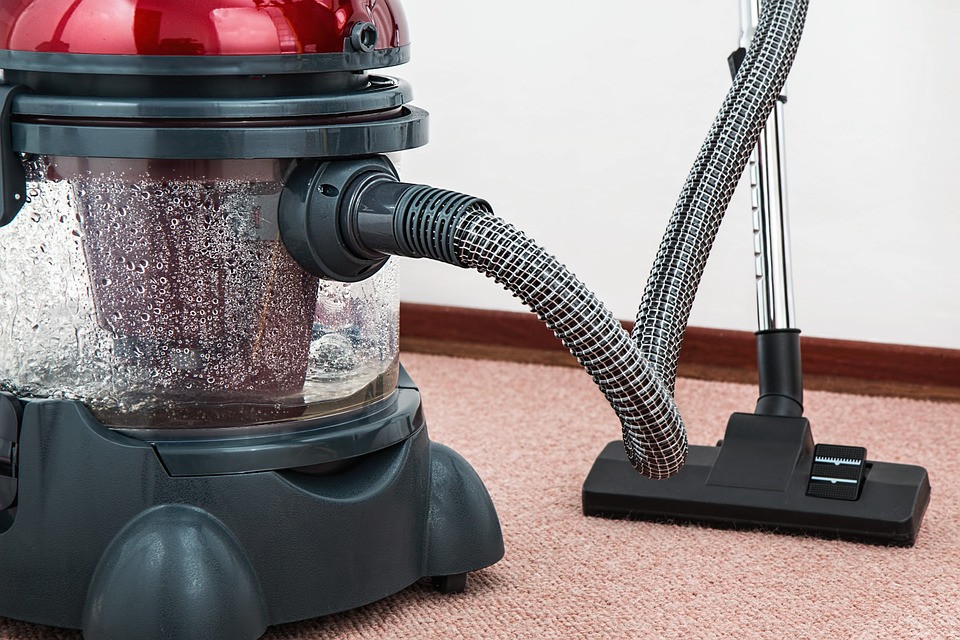At least 12 million Britons now suffer from allergies caused by dust mites, The Independent has today reported. The newspaper says that a report by the charity Allergy UK has revealed an epidemic of “home fever”, a range of symptoms caused by dust mites and other triggers around the home.
The report has been published as part of Indoor Allergy Week, which is intended to raise awareness of the kind of steps that can be taken to remove allergy triggers, or ‘allergens’, from the home. A survey in the report suggests that, currently, around two-thirds of people with allergies experience symptoms such as sneezing and itchy eyes caused by allergens including dust mites, chemicals, pets and mould.
This new report raises lots of questions, such as whether its small survey of symptoms in 1,600 allergy sufferers is actually strong enough evidence to suggest that there is an epidemic sweeping the nation.
Also, the report’s suggestions to change your mattress and use an air filter are likely to raise a few eyebrows since the awareness week is being run in conjunction with a mattress company and an air filter manufacturer.
What is “home fever”?
“Home fever” is a term used by Allergy UK to describe out-of-season hay fever symptoms. The most common of these are runny nose and sneezing, symptoms which the charity reports have risen greatly in recent years. Unlike regular hay fever, which is usually triggered by high pollen levels that vary seasonally, “home fever”, Allergy UK suggests, is triggered by allergens such as dust mites, moulds, cleaning products and pets that are present in the home or office. These can cause symptoms throughout all seasons.
Who compiled the report?
The news is based on a report by Allergy UK that surveyed more than 1,600 allergy sufferers about indoor allergies. The report was released ahead of Allergy UK’s Indoor Allergy Week, launched today, which aims to raise awareness about indoor allergies caused by house dust mites, moulds and pets.
As mentioned above, the awareness-raising week and report are supported by a mattress company and an air purifier manufacturer. It is not clear what role these companies had in the survey, which featured recommendations to prevent “home fever” by replacing your mattress and using an air purifier. This affiliation may be something to take into account when considering the report’s recommendations.
Allergy UK is a national charity supporting people with allergies, food intolerance and chemical sensitivity.
What did the report say?
The survey asked allergy sufferers what triggered their symptoms, offering the possible options of house dust mites, cleaning products, mould or pets. Participants could choose more than one option. The most popular answer was house dust mites at 57.6%, followed by pets (45.2%), cleaning products (31.2%) and mould (30.9%).
The report says these figures have risen since the last survey was published in February 2010. The Allergy UK report does not give any detail on the characteristics of the people surveyed or how many people answered each question. It also does not include any statistical analysis to say whether the differences observed between years are real or the result of random variation that occurs when different groups of people are surveyed. We must be very cautious in taking these figures at face value without more information about how the survey was carried out.
The most commonly reported symptoms of indoor allergy or “home fever” were runny nose (67.8%), sneezing (66.9%) and itchy eyes (62.1%).
Other findings include:
58.9% of indoor allergy sufferers found their symptoms were worse in the bedroom. The authors suggest that this was due to dust mites in the bed, quoting figures that “the average bed harbours 2 million dust mites and the average pillow doubles in weight over a period of six months due to dust mite faeces”.
16% of allergy sufferers said they wash bed linen every three weeks or less often, and 58% of those surveyed said they are washing at 30 or 40 degrees. This is two weeks longer than Allergy UK recommends and at a temperature that they say does not kill any dust mites present.
13% of allergy sufferers had had their current mattress for 11 years or more, and 3% kept theirs for 20 years or longer.
The authors suggest people “too often confuse allergy symptoms with a common cold or flu and, therefore, don’t treat the root cause of the problem”. Allergy UK believes the root cause is allergens such as dust mites, which trigger these allergic reactions and symptoms.
How common are household allergies?
Allergy UK estimates that at least 12 million people are allergic to their own home and so could be classed as household allergy sufferers. NHS Choices reports that indoor allergies are very common and that 10-20% of the population has an indoor allergy. The top estimate of 20% would be broadly in line with the figure suggested by Allergy UK, although it is not apparent how the charity has reached this estimate.
Most sufferers first develop indoor allergies in childhood, with 80% of cases developing before the age of 20. Men and women are equally affected by indoor allergies.
What causes household allergies?
The main cause of indoor allergies or “home fever” are house dust mites. Dust mites are microscopic creatures that survive well in warm damp conditions such as the average UK home. Beds provide the ideal environment for dust mites as they can feed on the skin cells we shed, obtain warmth from our bodies and gather water from our sweat and exhaled breath. They are also commonly found in carpets, upholstered furniture, fabrics and furry toys. While they are completely harmless to most people, in some they can trigger an allergic reaction. The allergen that triggers most allergic reactions is the mite droppings. These can collect in pillows, mattresses, duvets, upholstery and carpets.
Other common causes of indoor allergies include allergens from animals and from mould spores.
What can I do to ease my allergies?
Allergy UK recommends many ways to manage symptoms and reduce the amount of indoor allergens in the home.
Buy products that have been tested to ensure they prevent the escape of the house dust mite allergen.
Use allergen-proof barrier covers on all mattresses, duvets and pillows.
Dust regularly but use a damp duster first, then a dry cloth. Otherwise, you are just moving the dust around.
Wash all bedding that is not encased in a barrier cover (for example sheets and blankets) every week. Washing at 60 degrees or above will help eliminate house dust mites. The allergens produced by house dust mites dissolve in water so, while washing at lower temperatures will wash the allergens away temporarily, the mites will survive and produce more allergen after a while.
If possible, remove all carpeting in the bedroom and vacuum all surfaces of upholstered furniture at least twice a week.
Change your mattress every 8-10 years and replace pillows every year.
Use a high-temperature steam cleaner to rid carpets of dust mites.
Use light, washable cotton curtains, and wash them frequently. Reduce unnecessary soft furnishings.
Washable stuffed toys should be washed as frequently and at the same temperature as bedding. Alternatively, if the toy cannot be washed at 60 degrees place it in a plastic bag in the freezer for at least 12 hours once a month and then wash at the recommended temperature.
Reduce humidity by increasing ventilation. Use trickle-vents in double-glazing or open windows. Use extractor fans in bathrooms and kitchens.
If necessary, use a dehumidifier to keep indoor humidity between 30 and 50%, plus an air purifier to trap large airborne allergens such as pollen, house dust mite debris and mould spores.
These are just some of the recommendations given. To read the recommendations in full visit the Allergy UK website.
One point to note is that in the Allergy UK publication participants reported on various symptoms, most commonly runny nose, sneezing and itchy eyes (typical symptoms of allergy), but also a wider range of symptoms such as wheezing, disturbed sleep and poor concentration. The full range of symptoms offered is not specific to allergy, and could cover many things, including symptoms of the common cold and flu.
Additionally, participants appear to have self-reported what they believe triggers their symptoms. Therefore, taking these things into account, people with respiratory symptoms, irritable skin, poor concentration or difficulty sleeping should not necessarily assume that these symptoms are due to household allergies. If symptoms persist it may be advisable to see your GP.
Do these preventative measures work?
A recent high-quality systematic review looked at the evidence on whether controlling exposure to house dust mites improved asthma symptoms in people who were sensitive to house dust mites. Chemical and physical preventative measures were examined, including mattress covers, vacuum-cleaning, heating, ventilation, freezing, washing and air filtration. Measures of asthma included subjective wellbeing, medication use and various established measures of airway function.
The review, which included 3,121 patients from 55 studies, concluded that these measures had no effect on asthma symptoms (i.e. they were no more effective than doing nothing) and that such measures could not be recommended.
This high-quality review focused on symptoms of asthma caused by dust mites and not the more general symptoms of a runny nose and sneezing as described for “home fever”. It also does not specifically address each of the Allergy UK recommendations. However, it raises an important question. If controlling exposure to dust mites in these ways fails to improve asthma allergic reactions caused by house dust mites, would they be effective in preventing “home fever” also caused by dust mites?
Currently it is not known whether these preventative measures are effective in preventing “home fever”. This should be kept in mind before making potentially costly changes to your bedroom or house to reduce dust mite allergens.




